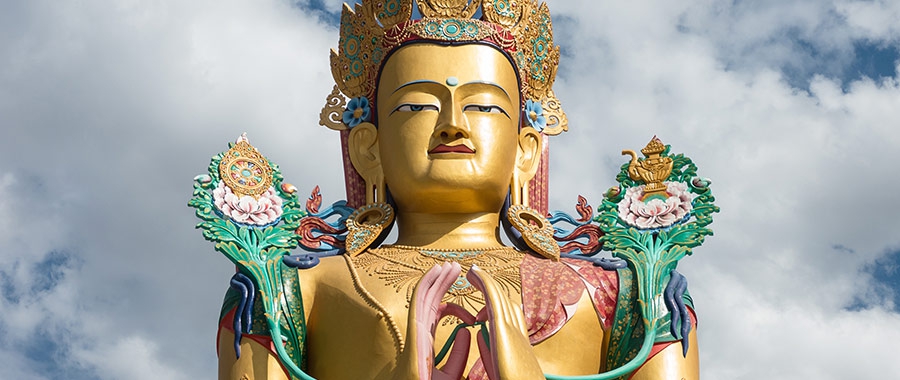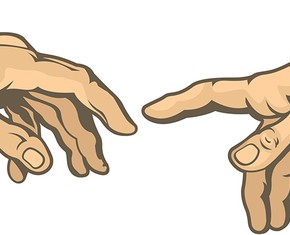The views expressed in our content reflect individual perspectives and do not represent the authoritative views of the Baha'i Faith.
Baha’is believe that Baha’u’llah, the prophet and founder of their Faith, fulfills the prophecies of Buddhism.
Among Baha’u’llah’s messianic claims, the Baha’i International Community, in a statement “prepared at the request of the Universal House of Justice,” included the future Buddha:
He [Baha’u’llah] is the one promised in all the scriptures of the past, the “Desire of all nations,” the “King of Glory.” To Judaism He is “Lord of Hosts”; to Christianity, the Return of Christ in the glory of the Father; to Islam, the “Great Announcement”; to Buddhism, the Maitreya Buddha; to Hinduism, the new incarnation of Krishna; to Zoroastrianism, the advent of “Sháh-Bahrám.”—Baha’i International Community, Baha’u’llah, p. 26.
Similarly, Shoghi Effendi stated that Baha’u’llah is “to the Buddhists the fifth Buddha” (God Passes By, p. 94) and, further:
He [Baha’u’llah] alone is meant by the prophecy attributed to Gautama Buddha Himself, that ’a Buddha named Maitreye, the Buddha of universal fellowship’ should, in the fullness of time, arise and reveal ’His boundless glory’” – God Passes By, p. 95.
The Sanskrit word, “Maitreya” (Pali: Metteya) which means, “The Benevolent One,” simply refers to the future Buddha. Maitreya is the same as the “fifth Buddha.”
There are a number of Buddhist texts foretelling Maitreya. Of these, the most important is the Anāgatavaṃsa (“The Chronicle of the Future [Buddha]”). Of this prophetic text, The Princeton Dictionary of Buddhism states:
Anāgatavaṃsa. In Pāli, “Chronicle of Future Events”; a medieval Pāli work in verse detailing the advent of Metteya (Maitreya) Buddha in the far distant future of this auspicious eon. The current eon is deemed auspicious because five buddhas—Maitreya being the fifth—appear during its duration, the maximum number possible. … [T]he Anāgatavaṃsa claims to have been preached to Śāriputra by the Buddha. The text elaborates upon the prophecy of the coming of Maitreya found in the Cakkavattisīhanādasutta of the Dīghanikāya. – Donald S. Lopez, Jr., and Robert E. Buswell, Jr., “Anāgatavaṃsa,” in The Princeton Dictionary of Buddhism, pp. 251–252.
Scholar K.R. Norman (Professor Emeritus of Indian Studies, Cambridge University) published a new translation of this Buddhist apocalypse in 2006: “The Anāgatavaṃsa Revisited,” Journal of the Pali Text Society 28 (2006): 1–37. Here are a few excerpts to give the reader a fair impression of the nature of these Buddhist prophecies:
105. That Conqueror will be eighty-eight cubits in height. That Teacher’s chest will be twenty-five cubits in diameter.
106–107. The Seer will have wide eyes, thick eyelashes, clear eyes. Not blinking day or night, with his physical eye he will see things, small or large, in all directions for twelve leagues without obstruction. His radiance will stream forth as far as twenty-five [leagues].
133. At that time a lifetime there will be 80,000 years. Remaining so long, [the Buddha] will bring many people to the other shore.
134. When the Perfect Buddha has attained Nibbāna, his Teaching will remain for 180,000 years. After that, there will be a terrible disappearance in the world.
135. Thus, the constituent elements are impermanent, not firm, temporary; existences are transitory, liable to destruction and old age, and empty.
138. Therefore, in order to see the Buddha Metteyya here, act rightly, energetically, firmly, with agitated mind.
139. Those who do good things here and dwell vigilant, monks and nuns, male and female lay followers,
140. … who have performed great auspicious honour to the Buddha[s], they together with the Devas will see the auspicious assembly at that time.
141. Practise the holy life. Give suitable gifts. Keep the observance day. Practise loving kindness carefully.
142. Be those who delight always in being vigilant in meritorious actions. Having done good here, you will make an end of misery. – Translated by K.R. Norman, “The Anāgatavaṃsa Revisited,” pp. 28, 30–32.
The life of the future Buddha, Maitreya, as portrayed above, has many similarities to the traditional life of the historical Buddha, except that the circumstances seem comparatively more extravagant and exalted. The Anāgatavaṃsa is meant, in part, to inspire Buddhists to be “vigilant in meritorious actions” in hope of being reborn in that auspicious future time and place, when Maitreya will transform the world into a Buddhist paradise.
Obviously this particular prophecy is highly unlikely: “At that time a lifetime there will be 80,000 years.” Not humanly possible! Such prophecies tend to use richly symbolic numbers, which operate by way of hyperbole, i.e. figurative exaggeration, to make a point.
As stated in a previous article on the return of Krishna, a prophecy such as this Buddhist prophecy operates as a social mandate—a messianic “job description,” as it were.
Baha’i scholar Moojan Momen has written an excellent article comparing Buddhist and Baha’i teachings. See “Buddhism and the Bahá’í Faith.” Here, Dr. Momen’s comparison of Buddhist and Baha’i teachings is favorable.
There are some doctrinal differences between contemporary Buddhist and Baha’i teachings, of course. That Buddhism today is atheistic—and holds that the “self” or soul is impermanent and ultimately nonexistent—is quite obvious.
Of course, Baha’i teachings are anti-anthropomorphic, and represent God as an “Unknowable Essence.” In other words, God is a Mystery with traces of the Creator throughout creation.
As for the self, Baha’is believe the self is always changing and evolving. In this sense, there is no static “self,” because the self itself is a flowing river of consciousness. In similar ways, later Buddhist texts speak of the “Buddha nature self,” which is the potential in each of us to achieve enlightenment.
For all of its profound psychological teachings, early Buddhism lacked a specific doctrine of social justice. This is not a criticism—it’s simply an observation. In this respect, Baha’u’llah has complemented and supplemented the teachings of the Buddha by bringing clear teachings of social justice.
The claim that Baha’u’llah is Maitreya, the fifth Buddha, is not a matter of certain proof. Buddhists, after all, generally expect the future Buddha to renew and reestablish Buddhism worldwide, in a new era in which Buddhist teachings and practices prevail. Obviously Baha’u’llah was not a Buddhist. The Baha’i teachings, moreover, are not specifically Buddhist, either.
But the fact remains that Baha’u’llah—and a number of essential Baha’i teachings—are qualitatively or equivalently “Buddhist” in spirit and in nature. Absent a similarly worthy candidate, a case can be made for regarding Baha’u’llah as the fifth Buddha, as Buddhists who have embraced the Baha’i Faith can attest, as a matter of personal faith and witness.
You May Also Like
Comments

















You wrote:
“Many Taoist sects have already recognised L. Ron Hubbard (scientology religion founder) as the 5th Buddha, Maitreya.”
Which Taoist sects?
Or did you mean Buddhist sects?
In “Hymn of Asia” (written in 1955 or 1956), L. Ron Hubbard ends his poem:
“Am I Metteyya? I have spoken to you. You will study soon. Meanwhile Good-bye.”
There are other Maitreya claimants as well.
Space does not permit a list here.
I invite you to compare Baha’u’llah’s message with L. Ron Hubbard’s message.